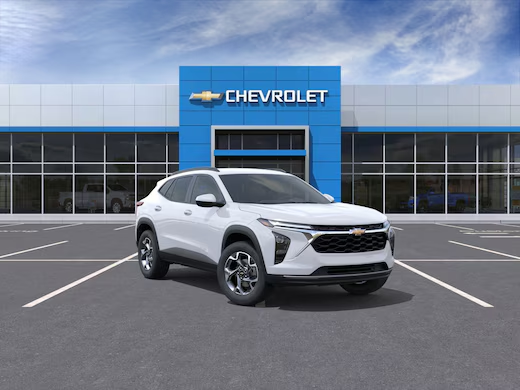Fuel Economy on Highways: Aerodynamics, Speed, and Tire PSI For Chevy cars

Fuel economy is a top concern for drivers, especially during long highway trips where fuel consumption can significantly impact travel costs. Chevrolet vehicles are engineered for efficiency, but factors like aerodynamics, driving speed, and tire pressure play a crucial role in maximizing fuel economy. Understanding how these elements interact allows drivers to optimize performance and save on fuel over time. For those exploring options, visiting a Chevy cars dealer in Raynham, MA provides access to vehicles designed for highway efficiency, along with expert advice on maintenance and fuel-saving practices. This article delves into the key factors affecting fuel economy on highways and how Chevrolet drivers can achieve optimal efficiency.
The Role of Aerodynamics in Fuel Economy
Aerodynamics refers to how air flows around a vehicle while it is in motion. A vehicle with poor aerodynamics encounters more air resistance, forcing the engine to work harder and consume more fuel. Chevrolet engineers carefully design the shape, contours, and components of their cars to reduce drag, which improves fuel efficiency at highway speeds.
Features such as streamlined body lines, sloped windshields, and rear spoilers help manage airflow and minimize turbulence. Even small design elements, like side mirrors and underbody panels, contribute to overall aerodynamic performance. By reducing drag, Chevrolet vehicles can maintain higher speeds with less fuel consumption, making aerodynamics a key factor for long-distance driving.
How Speed Affects Fuel Economy
Driving speed has a direct impact on fuel efficiency. As speed increases, aerodynamic drag grows exponentially, causing the engine to use more fuel to maintain higher velocities. For most Chevrolet cars, fuel economy is optimal between 50 and 65 miles per hour. Beyond this range, fuel consumption rises sharply due to increased air resistance and engine load.
Highway driving at excessive speeds not only reduces fuel economy but also increases wear on engine components and tires. Maintaining a steady, moderate speed while using cruise control when appropriate can help drivers achieve the best balance between travel time and fuel efficiency.
Tire PSI and Its Influence on Fuel Efficiency
Tire pressure is another critical factor affecting highway fuel economy. Underinflated tires increase rolling resistance, requiring the engine to expend more energy to move the vehicle. Conversely, overinflated tires can reduce traction and compromise safety. Maintaining the manufacturer-recommended tire pressure ensures optimal rolling efficiency, improves handling, and contributes to consistent fuel economy.
Chevrolet vehicles typically have recommended PSI values listed in the owner’s manual or on the driver’s side door jamb. Checking tire pressure before long trips and using a reliable gauge helps drivers maintain proper inflation, enhancing both safety and fuel efficiency.
Combined Impact of Aerodynamics, Speed, and Tire Pressure
Fuel economy is most effectively optimized when aerodynamics, driving speed, and tire pressure are all considered together. Even a highly aerodynamic Chevrolet car can experience reduced efficiency if driven at high speeds with underinflated tires. Conversely, maintaining proper tire pressure and moderate speeds can significantly improve mileage, even for vehicles with less advanced aerodynamic features.
Drivers who understand the combined impact of these factors can adjust their driving habits and vehicle maintenance routines to achieve noticeable fuel savings over time. Long highway trips provide an opportunity to implement these strategies consistently.
Fuel-Saving Driving Techniques
In addition to aerodynamics, speed, and tire pressure, driving techniques play an important role in highway fuel economy. Smooth acceleration and braking, minimizing unnecessary lane changes, and avoiding aggressive maneuvers reduce engine load and improve efficiency. Using cruise control on long stretches of highway helps maintain steady speeds and prevents fuel-wasting speed fluctuations.
Reducing the use of roof racks, open windows, or heavy cargo on top of the vehicle also improves aerodynamics and fuel efficiency. Small adjustments in driving style can have a measurable impact on fuel consumption, especially over long distances.
Vehicle Maintenance and Fuel Economy
Regular vehicle maintenance is essential for maintaining highway fuel efficiency. Chevrolet vehicles benefit from routine oil changes, air filter replacements, and spark plug inspections, all of which ensure the engine runs efficiently. Properly functioning fuel injectors and clean fuel systems contribute to consistent combustion and prevent performance loss.
Wheel alignment and suspension checks also play a role. Misaligned wheels increase rolling resistance and reduce tire lifespan, while suspension issues can create drag and affect vehicle stability. By keeping a Chevrolet car in top mechanical condition, drivers can maximize fuel efficiency and enjoy smoother, more economical highway travel.
Advanced Fuel-Efficiency Features in Chevrolet Cars
Many modern Chevrolet vehicles come equipped with advanced features designed to enhance highway fuel economy. Engine technologies such as direct injection, variable valve timing, and turbocharging optimize combustion and power delivery, reducing fuel consumption. Stop-start systems, found in select models, reduce idle fuel usage when the vehicle is stopped.
Some Chevrolet cars also feature aerodynamic enhancements like active grille shutters, which close at higher speeds to reduce drag, and underbody panels to improve airflow. Combined with efficient transmissions and lightweight materials, these features contribute to superior fuel economy on highways.
Benefits for Long-Distance Travel
Optimizing fuel economy is particularly beneficial for families and commuters who frequently drive long distances. Higher fuel efficiency reduces the number of stops needed for refueling, lowers travel costs, and minimizes environmental impact. Chevrolet’s emphasis on engineering and fuel-saving technologies ensures that drivers can enjoy comfortable, reliable highway travel without excessive fuel consumption.
Real-World Examples
For example, a Chevrolet Malibu driven at 60 mph with properly inflated tires and minimal roof cargo can achieve significantly higher fuel efficiency compared to driving the same vehicle at 75 mph with underinflated tires. Similarly, SUVs like the Chevrolet Equinox and Traverse benefit from maintaining recommended tire PSI and moderate speeds to offset their larger frontal area, which naturally increases aerodynamic drag. These real-world adjustments highlight how driver awareness and vehicle preparation enhance fuel economy.
Tips for Maximizing Highway Fuel Economy
- Check and maintain tire pressure: Ensures optimal rolling resistance.
- Drive at moderate speeds: Avoid excessive speeds to reduce aerodynamic drag.
- Minimize added weight and roof cargo: Reduces energy required to overcome air resistance.
- Use cruise control: Maintains consistent speed for better fuel efficiency.
- Perform regular maintenance: Oil changes, air filters, and spark plugs keep the engine running efficiently.
- Monitor driving habits: Smooth acceleration and braking reduce unnecessary fuel consumption.
Conclusion
Fuel economy on highways is influenced by a combination of aerodynamics, driving speed, tire pressure, and proper vehicle maintenance. Chevrolet vehicles are designed with engineering features and technologies that support efficient highway driving, but driver habits and regular care play an equally important role. Understanding these factors allows owners to maximize fuel efficiency, reduce costs, and enjoy reliable long-distance travel.



